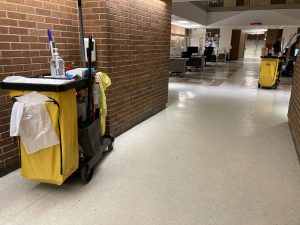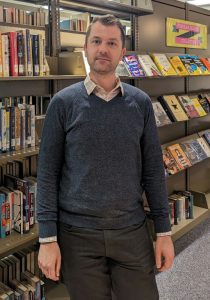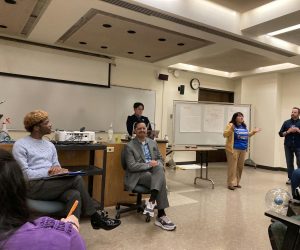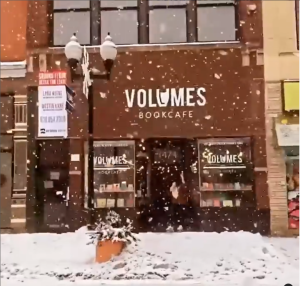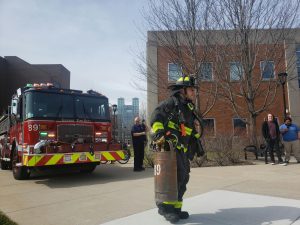Bohemian National Cemetery: Right in Our Own Backyard
October 21, 2014
Students that park on Bryn Mawr pass it every day although they probably know little about it. Directly next door to NEIU, right along Bryn Mawr and Pulaski is the Bohemian National Cemetery.
Bohemia was a former country located in Central Europe. After World War I, Bohemia became the main part of the newly formed country of Czechoslovakia, which combined Bohemia and other countries.
Czech immigration to Chicago began in the 1850s after the railroads had linked the east coast to Chicago, Chicago’s Czech-born population reaching its peak in the 1870s.
Founded in 1877 by Chicago’s Czech community, the cemetery began as a result of a Catholic priest denying burial in the Bohemian-Polish Catholic Cemetery to those individuals that he disliked or deemed unworthy.
One of those people denied burial was a Czech Catholic woman named Marie Silhanek. Silhanek was not allowed to be buried at the Bohemian-Polish Cemetery because she never made her “Easter Duty” (going to confession and Holy Communion at least once during Easter season). This was the final straw for the Czech citizens in Chicago and it resulted in the founding of the Bohemian National Cemetery.
The cemetery has expanded has expanded throughout the years. Starting with only 50 acres, the cemetery is now 124 acres.
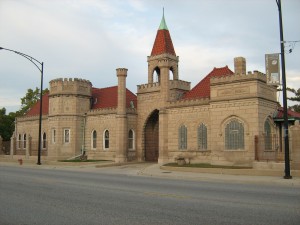
There are several points of interest that are unique about the Bohemian National Cemetery. The first one is the famous entryway into the cemetery. It is a very unique Gothic structure that replaced the original gatehouse in 1893. It was designated as a historical landmark in 1977 on the occasion of the cemeteries 100th anniversary.
Another point of interest is the World War Memorial and the flagpole that honors the veterans of World War I and World War II. The flag flies in honor of one of the cemetery’s veterans every day.
The Kolar family mausoleum is a key feature of the cemetery. The Kolars were the landlords to Mrs. O’Leary. Legend has it that Mrs. O’Leary’s cow kicked over a lantern that causing the Great Chicago Fire in 1871.
The Civil War Veterans Memorial’s cornerstone was laid in 1889, however the dedication was not until 1892. Artist Joseph Klir designed the statue. The bronze figure represents a private soldier in a full fatigue uniform holding a flag in his left hand and a musket with bayonet in his right hand.
There is another war memorial, the Spanish-American War Memorial known as Hiker. It is a memorial to the soldiers who fought in the Spanish-American War (1898) and the war in the Philippines (1899-1902). The statue is of a bronze figure American soldier in uniform and gear as worn in the tropics during those conflicts. It is eight feet and five inches tall and it stands upon a Wisconsin Red Granite boulder that weighs 25 tons.
The Klacel Circle is important to the Czech community. This is a circle in which some of the leading members of the Czech community are buried, including Vaclav Pohl who was the first President of the Czechoslovak Societies of America.
Another point of interest is where many of the Eastland disaster victims are buried. The Eastland was a passenger ship that rolled over in the Chicago River in 1915 killing 844 people. 143 victims of this tragedy were buried in the cemetery.
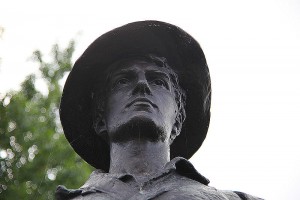
The family mausoleum of the Cermak family was built in 1929. Anton Cermak was the mayor of Chicago from 1931-1933. He was assassinated while protecting the life of President Franklin D. Roosevelt. Approximately 150,000 people came to the cemetery for Cermak’s entombment in March of 1933.
The most recent addition to the cemetery is the Chicago Cubs Columbarium. A columbarium is a vault or structure with recesses in the walls to receive the ashes of the dead. In 2009, the cemetery added this in dedication to their Cubs fans. It is a replica of Wrigley’s red brick wall. Dennis Mascari, a lifelong Cubs fan, helped raise the funds for this in hopes of making trips to the cemetery less melancholy.
So if you’ve been passing the Bohemian National Cemetery with curiosity, or if you’re fascinated with architecture or just love history, the Bohemian National Cemetery is worth a visit.


